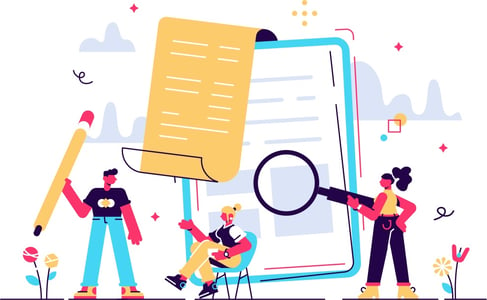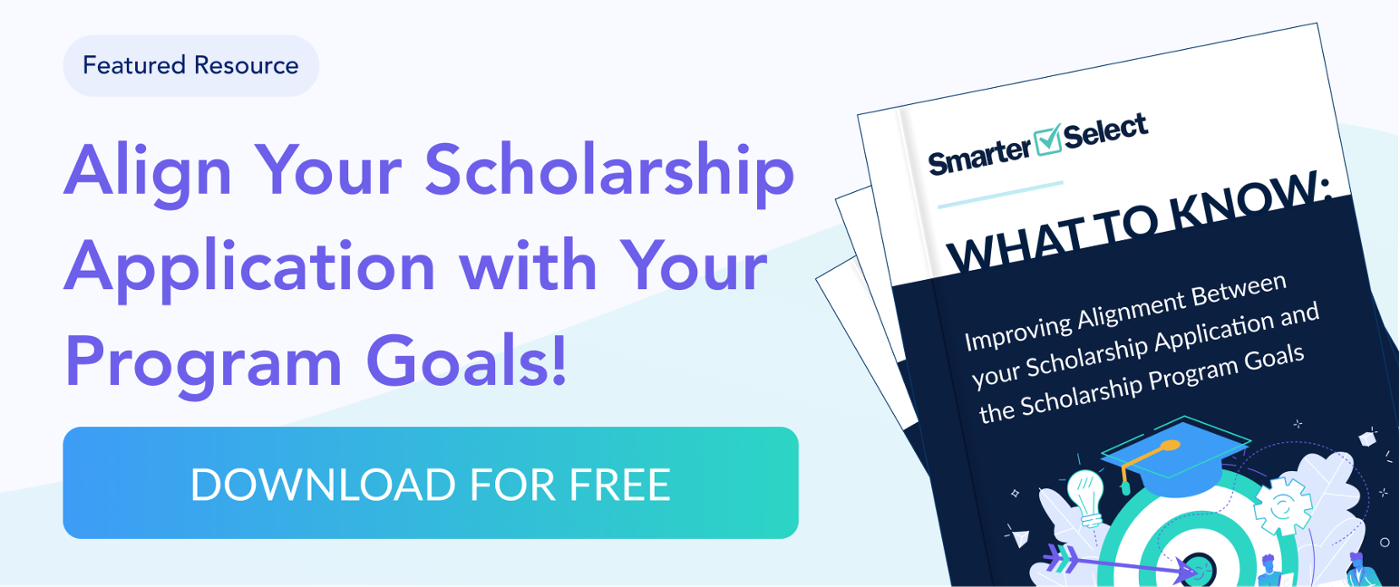5 Mistakes Scholarship Programs Make When Building Their Applications
Scholarship programs are the backbone of many education systems, providing financial aid to students who may not otherwise be able to pay for college. Unfortunately, many programs build their scholarship applications without putting much thought into them. This can be detrimental to your program and the goals for it. Not only because it makes the application process more frustrating for students, but also because badly-written scholarship applications can scare off qualified candidates. To make matters worse, it can make your organization look bad to your donors and your community!
With that in mind, below we will explore 5 of the most common mistakes that scholarship programs make when building their applications. Let's get started!
1. Asking Too Many Questions
The first mistake most people make when they create a scholarship application is creating too many questions. This can lead to many headaches for the applicant and those who have to review all of the applications.
To build scholarship applications that are easy to fill out and understand, keep questions simple and to the point. Each question should help you get one step closer to identifying the applicant's eligibility.
Questions like "What is your favorite color?" or "Do you prefer cats or dogs?" are great for a social media or dating profile. However, they don't serve the purpose of helping you narrow down the eligibility of an applicant.

It's also important not to ask more questions than you have to. Again, this can make your application a hassle for both the applicant and your evaluation team, wasting time for both parties.
To get an idea of how many questions are appropriate, we recommend using application management software that features an application template sampling. SmarterSelect has over 250 real-life programs created by their customers to choose from that can help guide you in writing yours. You can also copy these templates directly into your own form to save time.
2. Not Communicating Requirements Early, Often, and Clearly
Another mistake that people make is not explaining the application requirements well enough and repeatedly. This can be a problem because it can create a pool of unqualified applicants.
To avoid making this mistake, be sure to communicate your scholarship requirements at every stage clearly. Whether on your application website or through email notifications, make sure that applicants understand what you are asking for and how they can best provide the requested material.
It's also important to communicate your requirements early and often so applicants can get started on their applications as soon as possible, and avoid any misunderstandings about the eligibility process.
3. Requiring Too Many References
In some cases, it can be a good thing to require your applicants to provide multiple references. However, the reality is that most scholarship applications only need one or two contacts at most.

Requiring more references than you really need can be a waste of time and resources. A top priority should always be to make the process as fast and painless as possible for your applicants, and your team.
Just be sure to let applicants know how many and what type of references you are looking for as soon as possible. The earlier they are aware of the deadline, the more likely they will be able to find references in time.
4. Not Setting Questions Up to be Auto-scored
Auto-scoring is a great way to build a scholarship application that is consistent and fair. By setting up the questions on your application to be auto-scored, you can ensure that no one person has more weight than another, and everyone's answers are judged based on their own merits.
You can also make sure that the questions are scored consistently, which will cut down on mistakes and speed up the processing time of your scholarship applications. Creating questions that can be auto-scored will ensure applicants are answering questions evenly and allow reviewers to score the applications quickly as well.
5. Overcomplicating the Form
When creating your scholarship application, a good rule to follow is to keep it simple. This is yet another reason why having access to scholarship application samples to look at is so beneficial. You can see real forms that have helped managers just like you to run a successful scholarship program.

Build scholarship applications that are simple to read, fill out, and score. This will allow you to focus on identifying who your best applicants are rather than being bogged down in a complicated application review process.
Having a lengthy application makes it difficult for a candidate to get through the entire process, which means they may not finish or submit their thoughts. It’s a recipe for repelling the right candidates and not achieving your scholarship’s goals.
Be conscious of what information you are asking for and why. If it isn't necessary, don't ask for it on the application. The application should provide as much information as possible but, at the same time, it should be easy to understand and complete in a reasonable amount of time.
On the other hand, creating a simple and easy-to-understand application can allow more applicants to start filling it out, which means you will have a much larger pool of qualified applicants.
Bottom Line - Build Scholarship Applications People Want to Fill Out
These blunders may appear minor compared to some of the more severe issues that applicants confront, but they are still significant since they influence the overall quality of an application. By following these tips, though, you can help avoid common mistakes and ensure your scholarship program runs as efficiently as possible! And, when you’re ready to streamline the process even more, SmarterSelect can help. Start your free trial today.
FAQs
1. What are the most common mistakes that scholarship programs make when building their
application?
The most common mistakes that scholarship programs make when building their application are:
-
Asking too many questions
-
Not communicating the requirements clearly and early
-
Requiring too many references
-
Overcomplicating the form.
2. What is the benefit of setting up auto-scoring for scholarship applications?
Auto-scoring is a great way to build a scholarship application that is consistent and fair. By setting up the questions on your application to be auto-scored, you can ensure that no one person has more weight than another, and everyone's answers are judged based on their own merits.
3. What kind of questions should I avoid in a scholarship application form?
Questions like "What is your favorite color?" or "Do you prefer cats or dogs?" are great for a social media or dating profile. However, they don't serve the purpose of helping you narrow down the eligibility of a scholarship applicant.



